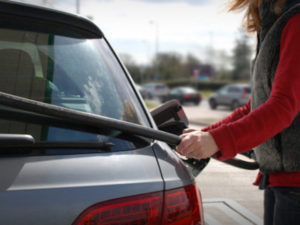Concerns raised over WLTP deadlines
The Department for Transport will not synchronise the publication of fuel economy and CO2 emissions data from the tougher new WLTP test cycle, raising concerns that carmakers may not be able to meet next January’s cut-off date.

WLTP is claimed to offer more realistic fuel economy figures than the outgoing NEDC test cycle.
Since last September, all new cars have been tested under the new Worldwide harmonised Light Vehicles Test Procedure (WLTP), which includes higher-speed, higher-load driving to offer more realistic data than the New European Drive Cycle (NEDC) it replaces. The knock-on effect is higher CO2 emissions for the vast majority of cars.
Manufacturers have until September this year to test all except run-out models, and are now issuing computer-generated ‘NEDC Correlated’ data, derived from the new WLTP figures, which are also often higher than the figures they replace. To assess how this should be handled, the DfT ran a consultation in March.
Two thirds (68%) of respondents to the DfT consultation said that this new WLTP fuel consumption data should be introduced from 1 January 2019, despite vehicle excise duty and company car tax reforms not taking place until April 2020. Of the remaining responses, some said they wanted that date brought forward, others said it would be more sensible to align it with changes in tax.
The DfT said it believes fuel economy data is relevant as soon as possible, so the switch will take place on 1 January in line with the European Commission’s recommendation. However, WLTP-derived CO2 emissions will not come into force for a year later, with plans to publicise the transition in the run-up to April 2020 to help consumers choose their next cars.
Meanwhile, almost half of respondents (44%) were happy for manufacturers to apply for derogations for non-WLTP vehicles to be sold after 1 September 2018, with most (88%) adding that the VCA could publish a list of affected models. Carmaker responses said the late publication of WLTP guidelines was causing a backlog at laboratories, and the rush to register vehicles before the cut-off date could cause supply gaps.
The DfT said up to 2,000 vehicles, or 10% of 2017’s sales volume, can be sold after that date, provided they were built before 1 June 2018. Electric vehicles are exempt.
Cap HPI said the announcement didn’t provide enough clarity to manufacturers about how this would be implemented. Beth Davies, product manager, commented: “From this consultation, the issue of how WLTP fuel economy changes are to be implemented at an options level on all vehicles at point of quote, which we feel is resulting in widespread industry confusion, still remains unanswered.
“The industry is going to struggle to take the necessary steps to ensure compliance for 1 January 2019. Unless more clarity is provided and soon, the fear remains that the WLTP deadlines may not be achievable for the industry as a whole.”
In addition to questions around WLTP, the consultation asked about post-Brexit regulations. Most respondents said they wanted regulatory alignment with the EU for vehicle certification, to avoid confusion. Some said the UK could choose to enforce stricter pollution limits than the EU, such as adopting World Health Organisation guidelines, to improve air quality.












